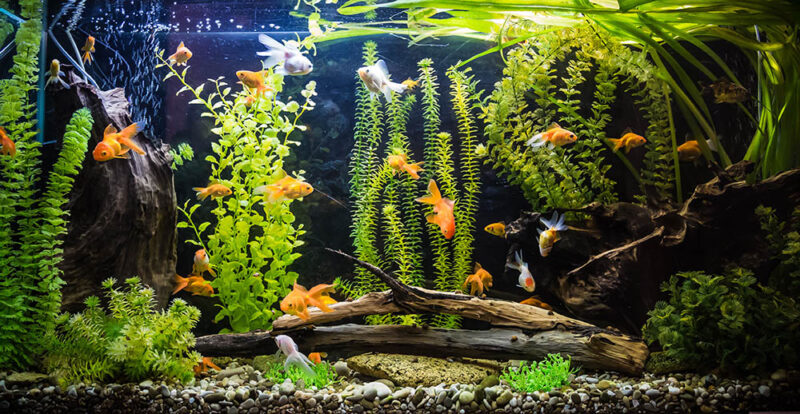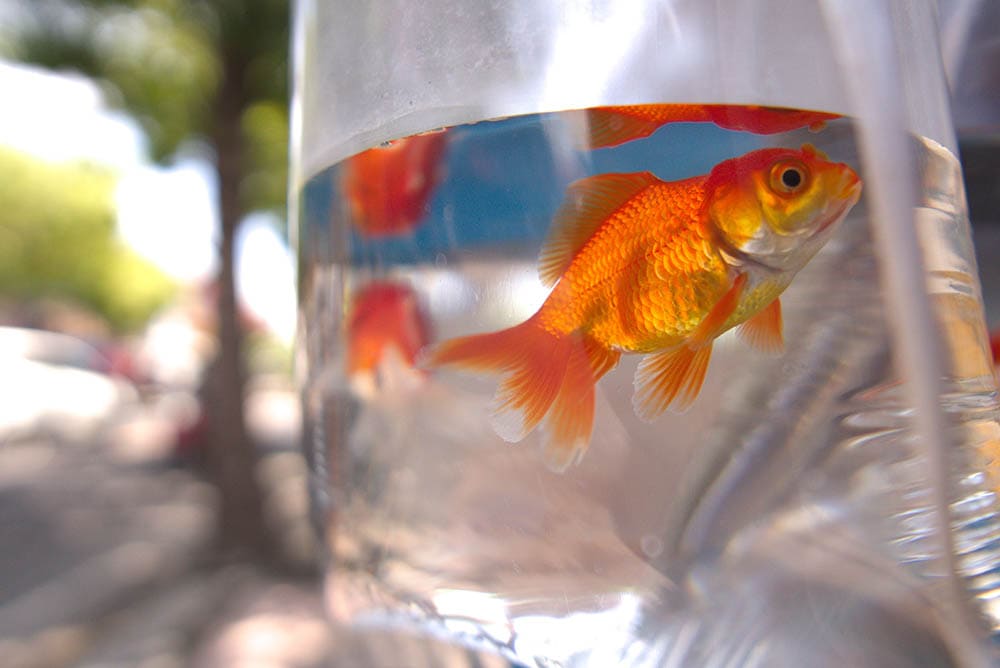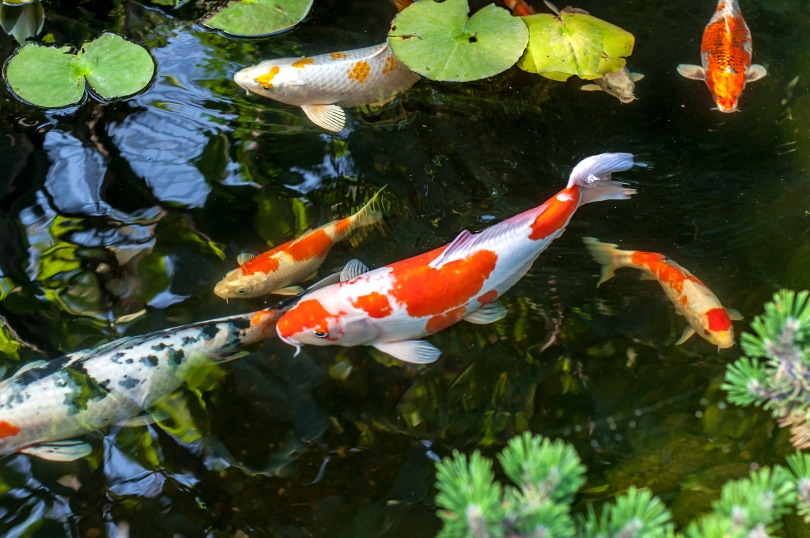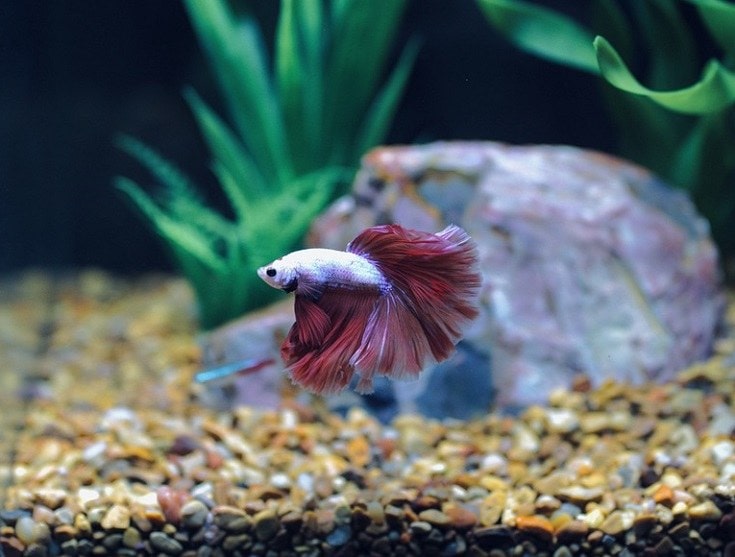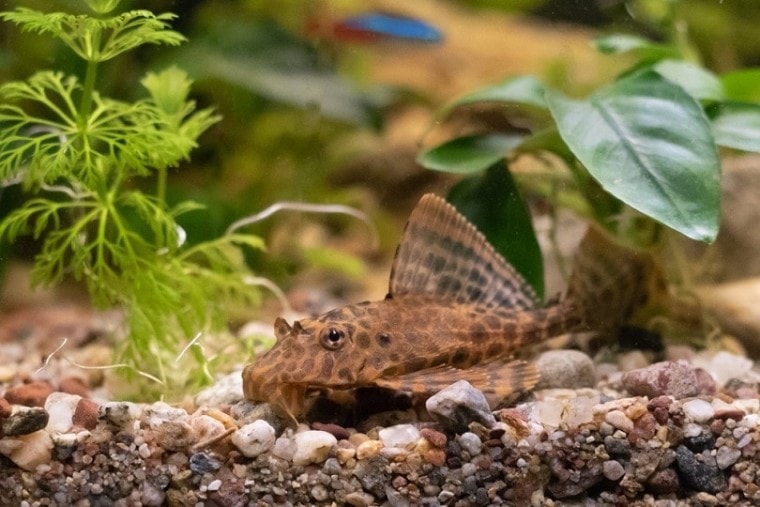
Plecostomus are one of the most popular types of suckermouth catfish in the Loricariidae family. They are nocturnal and ideal bottom cleaners and algae eaters; keep in mind some have the opportunity to grow to 24 inches and prefer warmer tank temperatures, so a heater is required.
The 12 Types of Plecos:
1. Zebra Plecostomus

These are striped plecos that resemble a pattern similar to a zebra, hence their name zebra plecos. They add an interesting addition to your tank and an eye-catching tank cleaner fish for your tank. They grow to 3.5 inches at max. Their care is moderately easy, and you should ideally keep them in a tropical heated tank with non-aggressive tank mates. They are generally quite shy in the daytime and need cozy hiding spots to rest in the day. They are seemingly different to other types of plecos because they do not rasp on wood items within the tanks and ideally thrive on an omnivorous diet with sinking algae and shrimp pellets or wafers. They live 10 to 15 years depending on their level of care.
2. Bristlenose Plecos
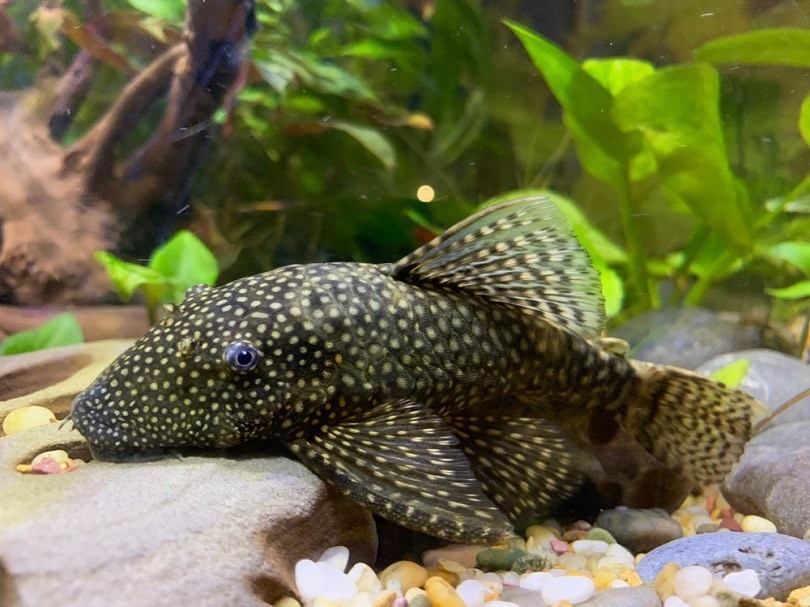
Probably one of the most commonly available plecos in the aquarium industry. Bristlenose plecos are one of the smallest growing pleco, growing between 3–5 inches in length and live for 12 years. They display an uneven coloring of either green, brown, or grey with white or yellow spots. Their care is generally easy, and they should ideally be fed a herbivorous diet, including fresh veggies such as carrots, cucumber, zucchini, or kale to nibble on through the night as they are nocturnal.
3. Gold Nugget Plecostomus

These interesting colored plecos display yellow tips to the end of their fins, their body is predominantly black with thick yellow dots. They live to about 5 years old and grow to 10 inches max. These are omnivorous peaceful community tank fish who prefer a warm tropical tank environment, due to their large size, care should be taken when choosing a suitable tank size.
4. Clown Plecos
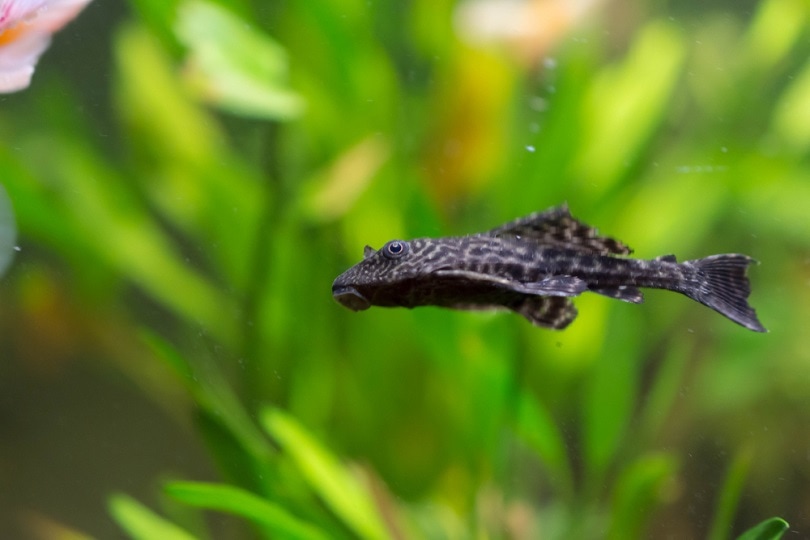
This is a dwarf loricariid, they are relatively low maintenance and get along well with other members in the tank. They live around 12 years when taken care of appropriately. Clown plecos body a beautiful coloring and display white and yellow bands that fade to a light orange on their body. They grow to 4 inches long and prefer to live in a heated tank with other peaceful fish.
5. Snowball Plecostomus

They display a black body with thick white dots resembling little snowballs, true to their name. They are medium-sized plecos usually growing around 5.5 to 6.5 inches in length. They are excellent bottom cleaners and willingly consume uneaten fish food left in the substrate, for this reason, they can help maintain good water quality. They live an average lifespan of 8 to 10 years depending on genetics and care level. They require a heated tropical tank to thrive.
6. Sailfin Plecos

Sailfin plecos grow over 12 inches and can live for over 20 years! That is quite a lifespan and you need to make sure you are able to care and provide for your pleco for those years to come, as well as having an exceptionally large tropical tank to accommodate their size. Due to their size and being one of the largest growing plecos available in the bobby, they make efficient tank cleaners and feed primarily on plant matter and occasionally meat-based protein. They have a type of leopard print pattern covering their armored bodies, making them quite interesting to view in an aquarium.
7. Royal Plecostomus

This type of pleco is known for its easy digestion of various kinds of wood within the aquarium that they will nibble on. They display an unevenly striped black and white patterns across their body and fins. They grow around 17 inches in length, they do have a fairly slow growth rate though. They live for about 10 years on average. They mainly eat algae-based foods such as sinking pellets or wafers and enjoy the occasional meat-based snacks. Due to their large size, they do well in large, heated tanks with other community fish.
8. Leopard Frog Plecostomus

These peaceful and hardy fish display pretty yellow or white and yellow stripes across their bodies and fins. They generally live between 8 to 10 years and reach just a tad over 4 inches in length when fully grown. They mainly consume a carnivorous diet of meat-based food and vegetable matter on the side. They seem to love frozen foods, such as bloodworms. Keep in mind they do not really touch or find an interest in consuming algae, so if you are looking for a good tank cleaner, leopard frog plecos do not reach those requirements.
9. Orange Spot Plecostomus
This type of pleco loves hiding spots and nibbling on wood (a seemingly favorite one is driftwood). They display an orange dotted pattern across their bodies and fins and are quite interesting to look at. Unfortunately, orange spot plecos show more aggressive behaviors to other plecos, so it is good to keep them alone in a heated tank with other compatible tropical tankmates. They live on average for about 12 years and grow to 5 inches maximum.
10. Common Plecostomus

Common plecos grow large, generally about 24 inches in length at max. they require a large tropical tank with other peaceful tank mates. They enjoy eating algae and sinking algae and shrimp pellets or wafers. Raw vegetables are a great addition to their diet as well, they thrive on a well-balanced diet. They require quite large tropical tanks that are well-filtered and stocked with compatible tank mates. Common plecos have been caught sucking on the slime coat of larger fish if their diet is lacking. They live between 10 to 15 years on average and are quite fast-growing.
11. Peppermint Plecostomus
They commonly display a black or dark brown coloring, they are generally quite peaceful community fish with tropical tankmates. They prefer fast-moving currents in the tank and feed on insect larvae and prefer warm heated and tropical tanks. They mostly enjoy grazing on algae on the glass and rocks and enjoy a diet of algae pellets and wafers and have supplements of vegetable matter. They grow to an average of 7 inches and live a bit over 5 years.
12. Rubber-Lipped Plecostomus
They come in a variety of interesting-colored varieties, some even displaying a light blue color. They grow between 5 to 7 inches and live for 10 to 12 years. They are herbivorous fish that primarily consume algae and vegetable matter. Growing algae out on the glass is not a sufficient diet, they require algae pellets or wafers as well. They require a heated tropical tank with other peaceful tankmates. They are generally not overly aggressive but should still be kept with peaceful community fish.
Taking in the information above, you will be able to make a viable decision on what type of Plecostomus suits your tank. They thrive in a heated tropical tank with peaceful community fish. They generally should not be housed with other plecos, but some exceptions can be made varying on maturity and gender. Most plecos are great tank and algae cleaners, keeping your tank clean and a gunk-free environment, who does not love a tank ‘maid’? Most varieties seem to be efficient in cleaning fish poop up and cleaning off algae. They make amazing additions to most tropical tanks.
Featured Image Credit: Hristo Peshev, Shutterstock


